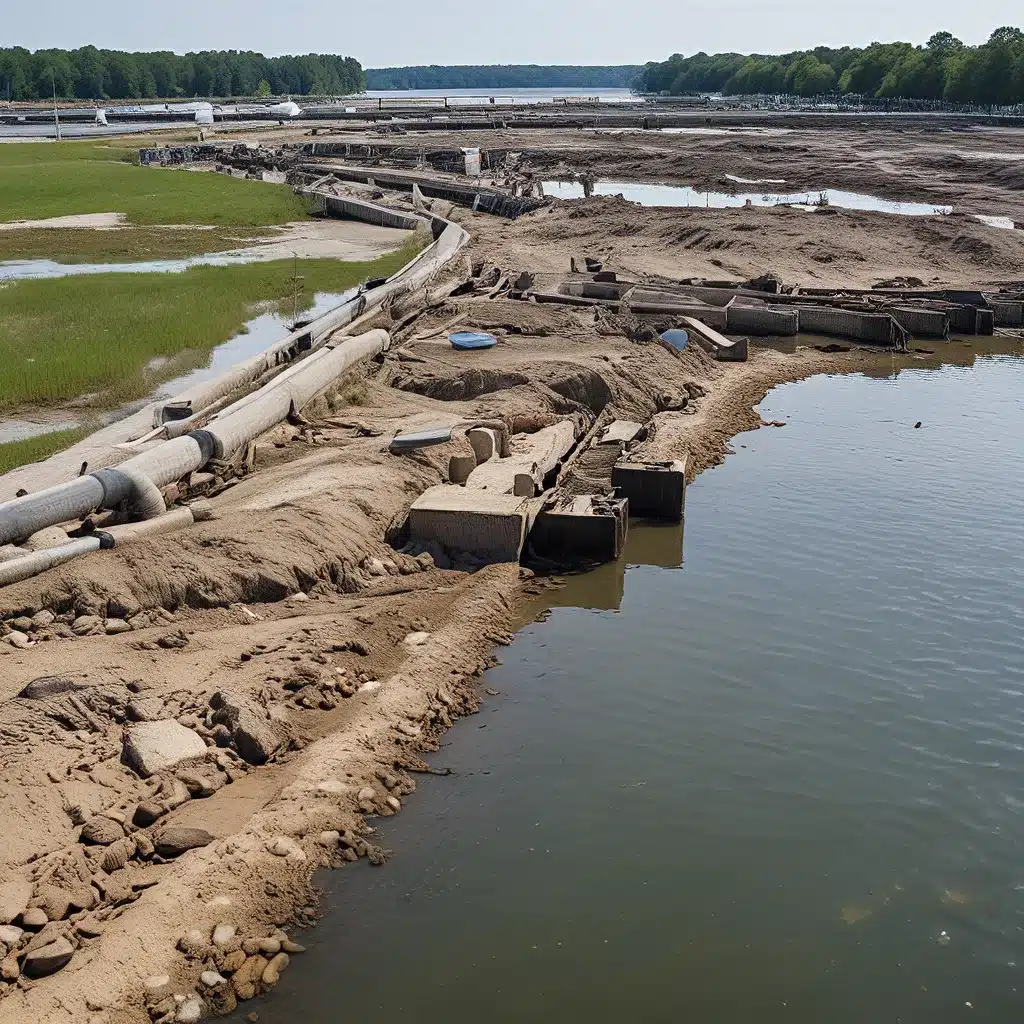
Keeping Up with the Currents of Change
As the world around us transforms, the waters we depend on face an ever-evolving landscape of regulations. And let me tell you, navigating these shifting tides can feel like trying to swim upstream during a raging storm. But fear not, my friends – with the right mindset and a little bit of know-how, we can weather this storm and come out stronger on the other side.
You see, the US Army Corps of Engineers, the guardians of our nation’s waterways, have been working tirelessly to protect and maintain these vital resources. And as the tides of public needs and policy have shifted, so too have the regulations they oversee. From the Rivers and Harbors Act of 1899 to the Clean Water Act of 1972, the regulatory landscape has become a veritable ocean of requirements.
The US Army Corps of Engineers Regulatory Program now administers and enforces a complex web of permits and authorizations, ensuring that any work or structures in, over, or under navigable waters, as well as the discharge of dredged or fill material into waters of the United States, are properly addressed. And let me tell you, wading through this bureaucratic maze can feel like navigating a labyrinth of red tape.
Uncharted Waters: Understanding the Regulatory Landscape
But fear not, my friends, for with a little bit of knowledge, we can chart a course through these uncharted waters. The first step is to understand the different types of regulated activities. Under Section 10 of the Rivers and Harbors Act, a permit is required for any work or structures in, over, or under navigable waters. And under Section 404 of the Clean Water Act, a permit is needed for the discharge of dredged or fill material into waters of the United States, which includes many wetlands.
Now, you might be thinking, “Wait, how do I know if I even need a permit?” Well, my friend, that’s where things can get a bit murky. The best thing to do is to reach out to your local US Army Corps of Engineers Regulatory office and have a chat with the experts. They can help you determine if your project or activity falls under their jurisdiction and guide you through the process of obtaining the necessary permits.
Navigating the Permit Process: A Collaborative Effort
But the regulatory journey doesn’t end there. You see, the US Army Corps of Engineers Regulatory Program doesn’t work alone. They coordinate with a variety of other federal, state, and local agencies to ensure compliance with a myriad of laws and regulations. For example, in Oregon, you’ll need to work with the Department of Environmental Quality for your Section 401 Water Quality Certification, and the Department of Land Conservation and Development for Coastal Zone Management Act compliance.
And let me tell you, this collaborative effort can feel like a dance of epic proportions. But don’t worry, the Corps of Engineers is there to guide you every step of the way. They’ll help you navigate the complex web of requirements, ensuring that your project not only meets regulatory standards but also balances the need for development with the protection of our precious aquatic resources.
Treading Carefully: The Consequences of Unauthorized Work
Now, I know what you’re thinking – “But what if I just skip the whole permit process and dive right in?” Well, my friend, that’s a dangerous game to play. Performing unauthorized work in waters of the United States or failing to comply with the terms of a valid permit can lead to some serious consequences.
We’re talking about potential administrative penalties, legal action, and even civil penalties or imprisonment. Not to mention the requirement to restore the area and mitigate for any impacts. Trust me, it’s not worth the risk. When in doubt, it’s always better to err on the side of caution and reach out to the experts at the US Army Corps of Engineers Regulatory Program.
Weathering the Storm: Adapting to Evolving Regulations
As the tides of change continue to shift, it’s more important than ever to stay informed and adaptable. And let me tell you, the team at Inland Waters, Inc. is committed to doing just that. We’re constantly keeping our finger on the pulse of the regulatory landscape, ensuring that we’re equipped to navigate the ever-changing currents of wastewater management.
From understanding the nuances of Section 10 and Section 404 permits to collaborating with the various agencies involved, we’re dedicated to guiding our clients through the complex maze of regulations. And when it comes to unauthorized work, you can bet we’ll steer clear of those treacherous waters – the risks simply aren’t worth it.
Charting a Course for the Future
So, my friends, as we look to the horizon and see the tides of change swirling all around us, let’s embrace the challenge with open arms. By staying informed, collaborating with the experts, and adapting to evolving regulations, we can navigate these uncharted waters with confidence and grace.
After all, the health of our waterways is paramount, and the US Army Corps of Engineers Regulatory Program is here to ensure that we strike the right balance between development and environmental protection. And with the right team at your side, you can be sure that your wastewater management efforts will weather any storm that comes your way.
So, let’s raise a glass (of clean water, of course) to the ever-changing tides and the resilience that will carry us through. The future may be uncertain, but with the right mindset and a little bit of know-how, we can ride the waves of change and emerge stronger than ever before.


